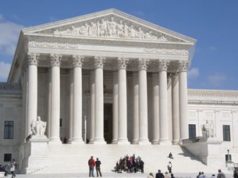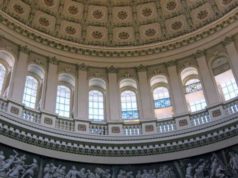Bankruptcy courts serve as a critical component of the financial and legal landscape, providing individuals and businesses a pathway to address insurmountable debt. However, the decisions made within these courts can often appear opaque and bewildering to those affected. This article seeks to unravel the shocking truths behind bankruptcy court decisions, exploring their purpose, the factors influencing outcomes, and the common misconceptions that surround them.
Understanding the Bankruptcy Court: An Overview of Its Purpose and Function
Bankruptcy courts are specialized judicial bodies that handle cases involving individuals and entities unable to meet their financial obligations. Established under federal law, these courts aim to provide a fair and orderly process for debtors to either discharge their debts or reorganize their financial affairs. The primary purpose of bankruptcy proceedings is to offer a fresh start to debtors while ensuring equitable treatment of creditors. By adhering to the principles of the Bankruptcy Code, these courts facilitate the resolution of complex financial disputes, allowing for the distribution of assets and the negotiation of repayment plans in a structured environment.
Key Factors Influencing Bankruptcy Court Decisions: A Comprehensive Analysis
Several key factors influence the decisions made by bankruptcy courts, including the type of bankruptcy filed, the financial circumstances of the debtor, and the nature of the debts involved. For instance, Chapter 7 bankruptcy, which involves liquidation of assets, contrasts sharply with Chapter 13, where debtors propose a repayment plan. The court’s assessment of the debtor’s income, expenses, and overall financial health plays a pivotal role in determining eligibility and outcomes. Additionally, the presence of secured versus unsecured debts can significantly impact the court’s rulings, as secured creditors often have priority in asset distribution. Understanding these factors is essential for debtors and creditors alike, as they navigate the complexities of bankruptcy proceedings.
The Role of Judges in Bankruptcy Cases: Discretion and Legal Framework
Judges presiding over bankruptcy cases wield considerable discretion within the confines of the legal framework established by the Bankruptcy Code. Their primary responsibility is to ensure that the proceedings are conducted fairly and that the rights of both debtors and creditors are upheld. Judges evaluate the merits of each case, considering various elements such as the debtor’s financial history, the validity of creditor claims, and compliance with statutory requirements. While judges must adhere to legal precedents and guidelines, their interpretations can vary, leading to differing outcomes in similar cases. This discretion underscores the importance of having skilled legal representation to navigate the intricacies of bankruptcy law effectively.
Common Misconceptions About Bankruptcy Court Outcomes: Debunking the Myths
Despite its critical role in financial recovery, bankruptcy courts are often shrouded in misconceptions. One prevalent myth is that filing for bankruptcy equates to financial failure or irresponsibility. In reality, bankruptcy can be a strategic decision for individuals and businesses facing unforeseen circumstances, such as medical emergencies or economic downturns. Another misconception is that all debts are discharged in bankruptcy; however, certain obligations, such as student loans and child support, typically remain intact. By debunking these myths, individuals can better understand the potential benefits of bankruptcy and make informed decisions regarding their financial futures.
The Impact of Creditor Claims on Bankruptcy Court Rulings: What You Need to Know
Creditor claims play a significant role in shaping the outcomes of bankruptcy cases. Creditors must file claims to recover debts owed to them, and the nature of these claims—secured or unsecured—affects their priority in the distribution of the debtor’s assets. Secured creditors, who have collateral backing their loans, are often paid first, while unsecured creditors may receive little to nothing depending on the available assets. The court meticulously evaluates these claims, ensuring their validity and adherence to legal standards. Understanding the dynamics of creditor claims is crucial for debtors, as it can influence their strategy during bankruptcy proceedings and impact their financial recovery post-bankruptcy.
Navigating the Appeals Process: Challenging Bankruptcy Court Decisions Effectively
The appeals process in bankruptcy cases allows parties dissatisfied with a court’s ruling to seek a review by a higher court. This process can be complex and requires a thorough understanding of both procedural and substantive law. Typically, appeals must be filed within a specified timeframe, and the appellant must demonstrate that the bankruptcy court made a legal error or abused its discretion. Engaging experienced legal counsel is essential to navigate this process effectively, as the appellate court will review the case based on the existing record and may not consider new evidence. Successfully challenging a bankruptcy court decision can lead to significant changes in the outcome, making it a critical avenue for those seeking redress.
In conclusion, the decisions rendered by bankruptcy courts are influenced by a myriad of factors, including the legal framework, the role of judges, and the nature of creditor claims. By understanding the purpose and function of these courts, as well as debunking common misconceptions, individuals can better navigate the complexities of bankruptcy proceedings. Whether facing financial distress or seeking to challenge a court ruling, informed decision-making and skilled legal representation are paramount in achieving favorable outcomes in bankruptcy cases.





















